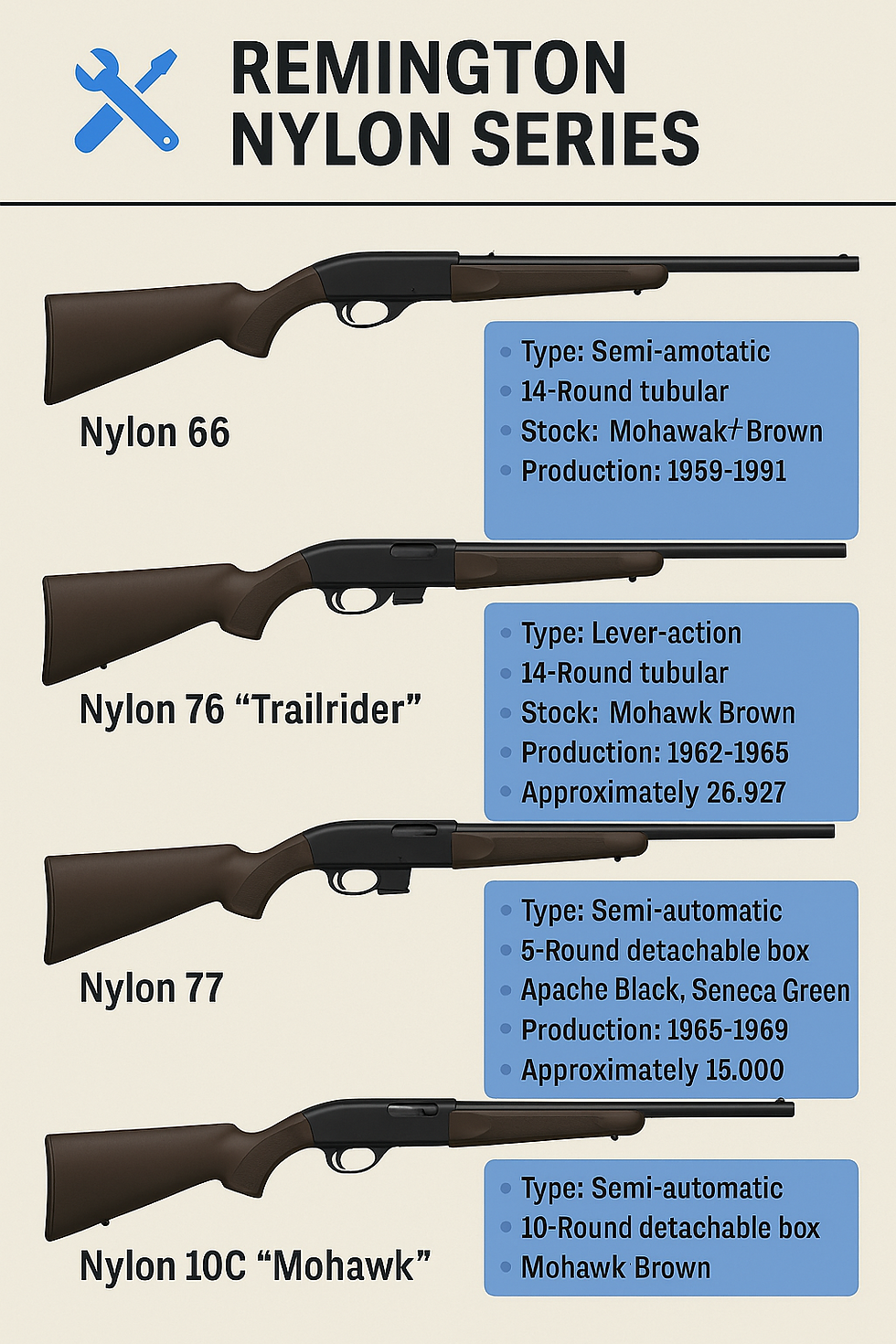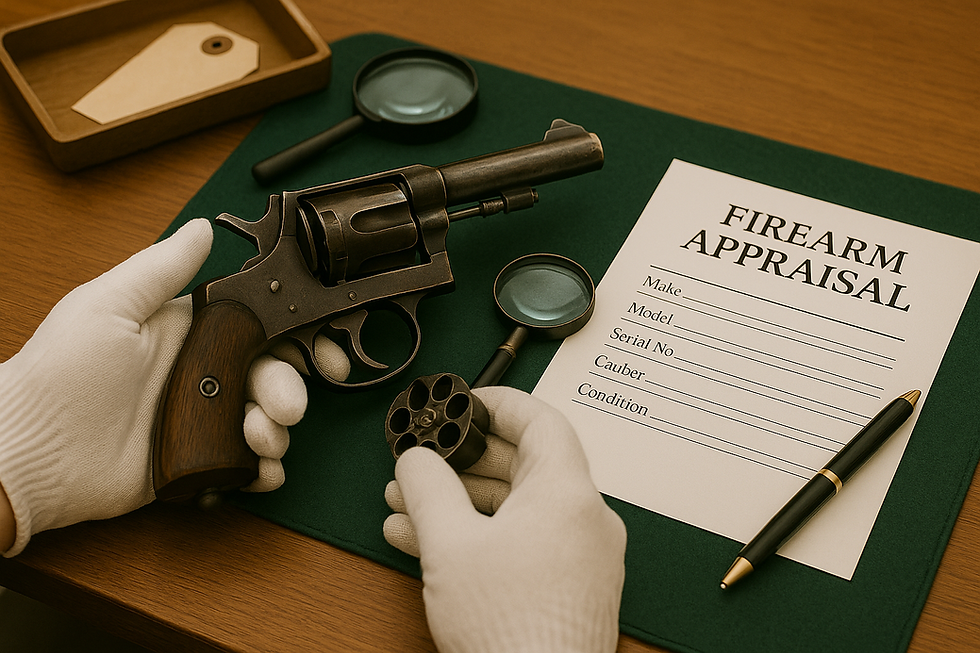Plastic Fantastic
- Drew McDermott

- Jul 24
- 4 min read
Updated: Jul 30
The Remington Nylon 10C and the Joy of a .22 Childhood
Growing up in South Boston in the ’70s, there wasn’t much green space, but I was lucky , my mom and dad had a small house in Vermont, and every fall & summer we would pack off and a head for a vacation soon to be full of adventure stories. That’s where I first met the Remington Nylon 10C. Not in the woods, but behind the glass of a wooden display case at the local hardware store. You know the kind: pegboard walls, a cooler full of sodas, and a worn wood floor that creaked like an old porch. That rifle stared back at me like something out of science fiction, a gun that looked more like a Star Wars prop than anything my dad toted.

But that’s the thing. The Remington Nylon 10C was ahead of its time. It still kind of is.
A Gun Made of Plastic? In 1959?
If you’re not familiar, the Nylon 10C was part of the iconic Remington Nylon series, a lineup that shook up the firearms world when it launched in 1959 with the Nylon 66. Up until that point, guns were steel and walnut. Period. Then Remington, with a little help from DuPont (who just happened to own them), dropped a .22 rifle with a Zytel nylon stock and receiver cover. That was borderline heresy. People thought it would crack in the cold, melt in the heat, or just feel too “toy like” to take seriously.
They were wrong. The Nylon rifles, including the 10C, turned out to be shockingly rugged, nearly maintenance free, and accurate enough to knock squirrels out of trees all afternoon long.
The 10C: Tubular Roots, Box Mag Evolution
The Nylon 10C was a bit of a hybrid in the Nylon lineup. It was essentially a magazine fed version of the Nylon 66, sharing the same sleek, space age lines but trading the 14-round tubular magazine in the buttstock for a detachable 10-round box mag. That may not sound revolutionary today, but back then, it made it more familiar to folks used to bolt guns or military surplus trainers.
It had no bolt hold open on empty, and the trigger wasn’t match grade by any stretch, but none of that mattered. It was light. It was handy. It was durable. And for a kid like me, with a new pair of Chuck Taylors and a summer full of daylight, it was everything.
Running Rounds Through the Nylon
I still remember the feel of the plastic stock. It had this weird texture, somewhere between Tupperware and lawn furniture, and in your hands, it felt indestructible. You could bang it around in the woods, drop it in the dirt, wipe it off with your T-shirt, and it just kept running.

Accuracy? Let’s be honest, at 13, shooting prone off a tree stump, I wasn’t punching sub-MOA groups. But I could hit cans at 50 yards all day, and the action cycled .22 LR with a kind of zippy, mechanical snappiness that I still find satisfying. There was something about the ping of ejected brass and the way the bolt slammed forward that made you feel like you were handling something more high-speed than just a plinker.
A Lineup for the Ages
The 10C wasn’t alone. Remington put out a whole family of Nylon rifles:
Nylon 66 – The original. Tube-fed. In Mohawk Brown, Apache Black, and Seneca Green.
Nylon 76 – A lever-action variant, pretty rare these days.
Nylon 77 – Magazine-fed like the 10C, but with subtle internal differences.
Nylon 11, 12, 12A – Bolt-action versions for those who preferred slower-paced plinking.
They even tried a smoothbore “Garden Gun” variant for pests and short range pests, and over the years, collectors have snapped up the rarer colors like candy. I remember once seeing a Seneca Green 66 on the shelf and thinking it looked like something out of a comic book.
Why the Nylon 10C Still Matters
These rifles were often a kid’s first gun, affordable, reliable, and weird enough to feel special. If you walked into a department store or a K-Mart back in the day, you could pick one up off the rack like you were buying a toaster. There’s a generation of us who learned the basics of sight picture, trigger control, and ammo discipline through a Nylon rifle.
Today, the 10C doesn’t get the same collector hype as the original 66, but that just means you can still find them at reasonable prices. And when you do, odds are it still works. The synthetic stock doesn’t warp, and the action doesn’t gum up easily. You can store it in a barn for 20 years, blow out the cobwebs, and it’ll run just fine.

Final Thoughts
Sometimes we forget that innovation doesn’t always come wrapped in steel and tradition. The Nylon 10C wasn’t just a novelty, it was a quiet revolution. It opened the door to polymer firearms years before Glock ever existed. And for those of us who got our start with one, it wasn’t just a .22, it was freedom in a box magazine.
I don’t have my original 10C anymore, but I bought the one in the pictures for myself. Like a lot of things from that era, my original disappeared somewhere between apartments and job changes. But every now and then, I’ll see one on a rack at a gun show, and I’ll stop for a moment, still hoping to find that Seneca Green Bad Boy. Because some guns don’t just shoot bullets. They shoot memories.
By:
Drew
Gun Buyer | St. Louis, MO | MDRF Enterprises






Comments